More about: The 13 Best Works in the Louvre in Paris
The Louvre Museum in Paris is not only one of the most valuable museums in the world, it is also one of the largest and, without a doubt, seeing it is one of the essential things to do in Paris. Located in the former royal palace of the Louvre in the center of Paris, there are more than 60,000 square meters that house about 35,000 works of various kinds.
With such a collection it is impossible to see the museum in its entirety in a single visit. And, therefore, in this post I will tell you which are the pieces that every visitor who buys tickets to the Louvre has to see if or if.
1. The Venus de Milo

Once you have redeemed your ticket for the Louvre Museum, we start this tour with one of the most iconic sculptures of the art gallery and the history of art, the Venus de Milo. It is considered one of the most important sculptures of ancient Greece and was found in 1820 by a farmer tilling the land on the island of Milo in Greece.
Itrepresents the goddess Aphrodite and is made in a piece of white marble of just over two meters high. Its fame and beauty has been earned thanks to the impeccable work of the author and proportions considered perfect in harmony.
- Author: Attributed to Alexander of Antioch.
- Date: 110 B.C.
- Location: Floor 0 of the Louvre, room 345.
2. The Victory of Samothrace
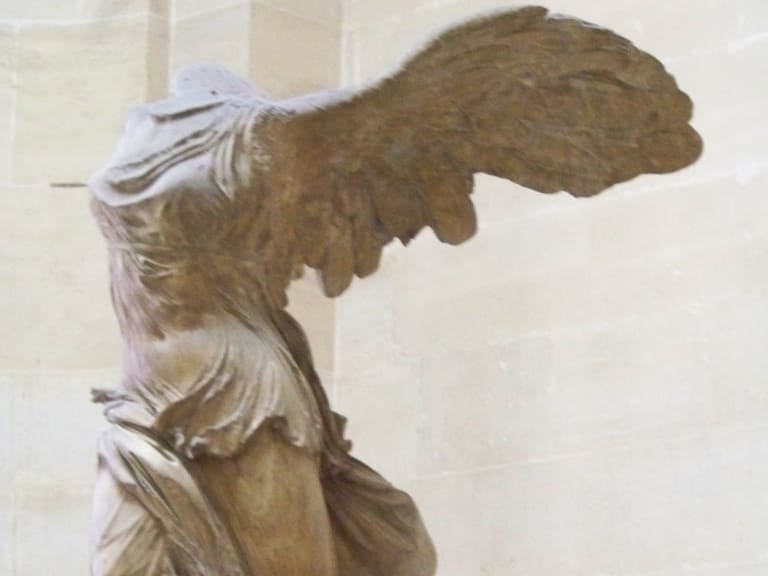
Personally it is my favorite sculpture of the entire museum. It is simply spectacular. It represents the goddess Nike, goddess of victory in Greek culture, walking on the bow of a ship. So it is believed that it was made to commemorate a victory in a naval battle. It was found near the Greek island of Samothrace in 1863 and later taken to France.
The posture, the position of the wings and, above all, the marble work simulating a wet tunic make the sculpture look like it is going to come to life and fly away. In addition, its location in the museum in a privileged place, at the top of the Daru staircase and on a large pedestal that simulates the bow of a ship, further enhance its beauty. Did you know that you will see a copy of the sculpture if you make an excursion to Versailles from Paris?
- Author: Unknown.
- Date: 190 B.C.
- Location: Daru Staircase.
3. The seated scribe

The Seated Scribe is one of the best known and most relevant figures of ancient Egypt because of its exceptional state of preservation. The sculpture represents a scribe, a high official of ancient Egyptian society, with a level of detail rarely seen in ancient Egyptian works.
Itpreserves practically intact the colors of the hair, skin and eyes made of rock crystal, white quartz and ebony. In addition, it has details, such as the folds of the skin due to the posture of the figure, which are not at all usual in works of the same period. A fundamental piece for lovers of Egyptian culture.
- Author: Unknown.
- Date: Between 2480 and 2350 B.C.
- Location: Floor 1, room 635.
4. The Code of Hammurabi

You have almost certainly studied or read about the Code of Hammurabi. And it is nothing more and nothing less than the first legal document in history about which there is evidence. Well, with your ticket to the Louvre Museum you can see it.
It is a black basalt stone two meters high in which the god Shamash is represented delivering the laws to the king of Babylon Hammurabi. Under this relief are engraved the 282 laws known as the Code of Hammurabi, including some as well known as the law of Talion or the principle of the presumption of innocence. More than for its artistic value, this work stands out for its historical relevance being one of the most important of the Louvre in this sense.
- Author: Unknown.
- Date: 1750 B.C.
- Location: Floor 0, room 3.
5. Psyche reanimated by the kiss of love

As far as pure beauty is concerned this work occupies a privileged place in the Louvre and the history of art. Also known as The Kiss, the representation of Eros and Psyche is beautiful because of the work of its author, Antonio Canova, with the marble in the posture and details of the figures.
But also for the legend of what it represents. Aphrodite, goddess of beauty, ordered her son Cupid to shoot an arrow at Psyche, the most beautiful daughter of the king of Anatolia, out of jealousy of her beauty. This arrow would make Psyche fall hopelessly in love with the worst man she ever met, however Cupid fell in love with her and ended up throwing the arrow away.
- Author: Antonio Canova.
- Date: End of XVIII century.
- Location: Floor 0, room 4.
6. The Winged Bulls

These colossal figures were representations of hybrids between bulls, eagles and humans that in the Mesopotamian culture were placed at the entrance of cities and temples under the belief that they served to protect them from enemies.
The Louvre Museum houses two of these figures being, along with those in the British Museum, the most important that are preserved. They are located at the entrance of a room fulfilling the function for which they were created. As a curiosity, if the figures are looked at from the front they seem static, but from the side they give the sensation of moving. The trick is that they have 5 legs.
- Author: Unknown
- Date: 713 B.C.
- Location: Floor 0, entrance of room 4.
7. The Mona Lisa
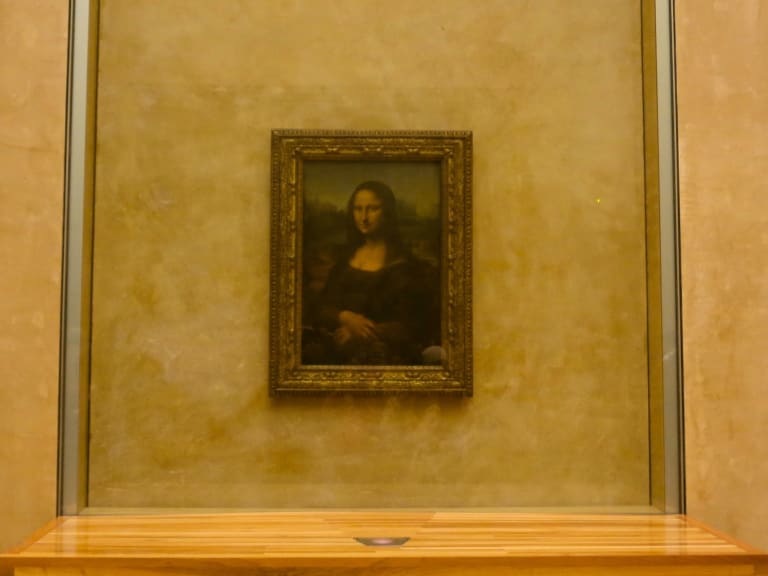
With your ticket to the Louvre Museum, you will not only see sculpture, but also painting. This tour continues with the most famous painting in the Louvre and in the whole world. Does it need any introduction? I'm talking, obviously, about The Mona Lisa or Gioconda. Da Vinci's work is the quintessential symbol of the Louvre and virtually everyone who passes through the museum does not leave without photographing it.
The oil painting is surprisingly small for those who have not seen it, measuring 77 centimeters high and 53 centimeters wide. The mysteries surrounding the painting are largely responsible for its fame. It is not known for sure who is the woman represented by Leonardo Da Vinci, although the most accepted hypotheses point out that she could be Lisa Gherardini, wife of Francesco del Giocondo, both nobles of the city of Florence.
Another of the claims of the work is the mysterious smile of the woman. Also noteworthy is Da Vinci's technique and his use of "sfumato" which blurs the background to enhance the figure depicted. You will have to juggle if you want a picture next to the Mona Lisa, as she is always surrounded by hundreds of people. It is best to go early in the morning, when the Louvre's opening hours begin, to avoid crowds.
- Author: Leonardo Da Vinci.
- Date: Between 1503 and 1519.
- Location: Floor 1, room 6.
8. The Marriage at Cana

Another of the most recognized paintings you will see on your guided tour of the Louvre Museum is The Marriage at Cana. It is located in the same room as the Mona Lisa, so it is sometimes overshadowed until visitors turn around and contemplate its imposing dimensions. The painting is almost 7 meters high and almost 10 meters wide.
Its enormous size along with its colors and details make it a masterpiece of Italian Mannerism. The painting represents Jesus accompanied by his disciples at a wedding celebrated in Cana, known for being the place where he transformed water into wine. As a curiosity, the painting arrived in France after Napoleon's troops stole it in Italy in 1797.
- Author: Paolo Veronese.
- Date: 1562 and 1563.
- Location: Floor 1, room 6.
9. Liberty Leading the People

With your admission to the Louvre Museum, you will also see the most recognized symbol of the French Revolution and an icon of French art. This famous painting by Eugène Delacroix depicts one of the uprisings of the French people against the monarchy and does so with the figure of a woman with a naked torso holding the French flag in one hand and a rifle in the other.
An image that has become an icon of freedom and that today can be admired in the Louvre Museum.
- Author: Eugène Delacroix.
- Date: 1831.
- Location: Floor 1, room 77.
10. The coronation of Napoleon
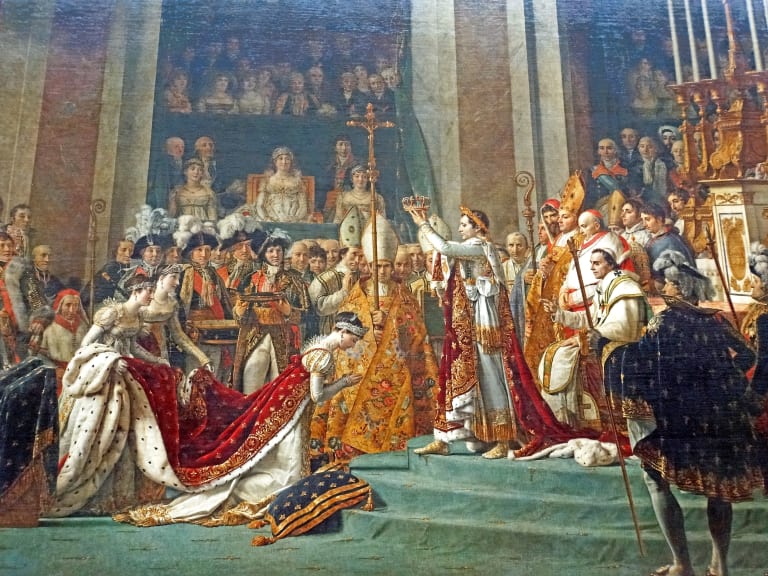
Along with Liberty Leading the People, The Coronation of Napoleon is the greatest work of French art. It was commissioned by Napoleon himself from his official painter, Jacques-Louis David, and represents the moment of his coronation as Emperor of France in the cathedral of Notre Dame.
The value of the painting lies firstly in the historical value of the moment it represents and secondly for its artistic value. It is one of those canvases that you can contemplate for many minutes because of the amount of details it has.
- Author: Jacques-Louis David.
- Date: Between 1805 and 1808.
- Location: Floor 1, room 75.
11. The Oath of the Horatii
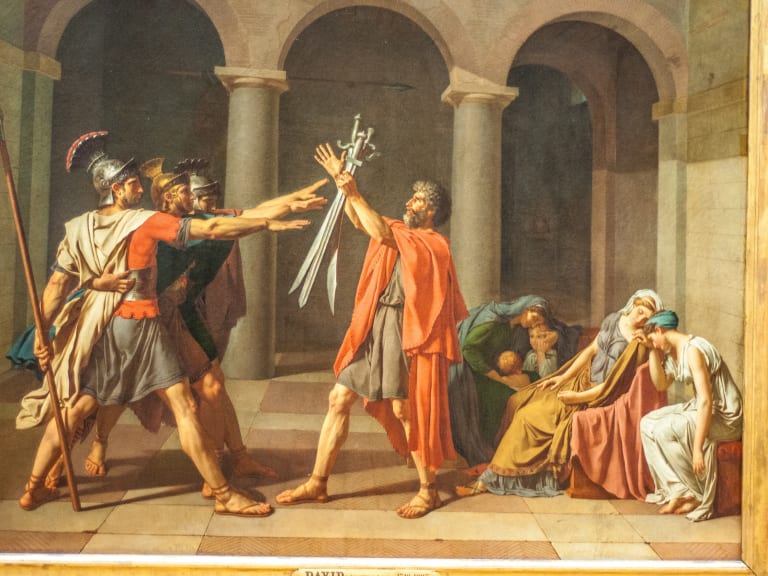
It may not be so well known to you, but this is one of the major works of Jacques-Louis David, the same author of The Coronation of Napoleon. The 3.3 meters high and 4.2 meters wide canvas represents the oath of Horatius' sons before leaving for war against the Curiatii.
This is a conflict of interest, since two of Horace's sons were engaged to two women of the Curiatii. But more than for the background story, this painting is recognized for its composition and perspective. An aspect so successful that it is used as an example in art schools all over the world.
- Author: Jacques-Louis David.
- Date: Between 1784.
- Location: Floor 1, room 702.
12. The Raft of Medusa
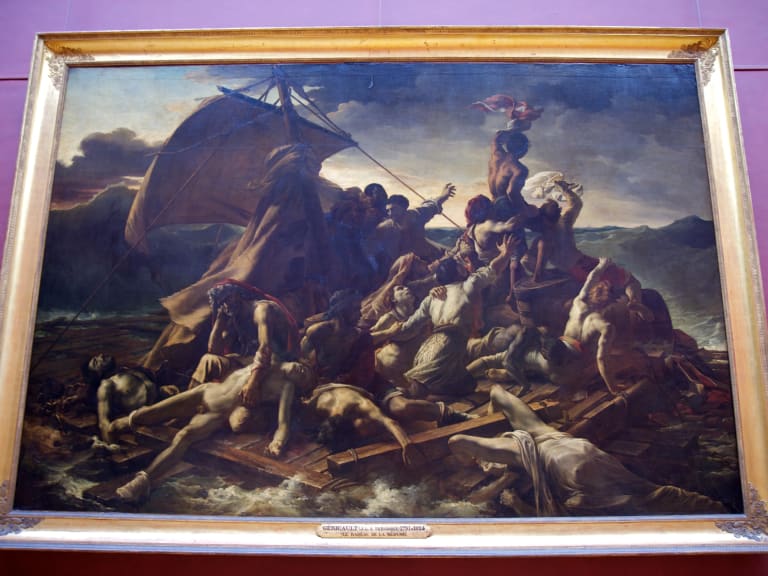
This work is an icon of French Romanticism. The painting itself was a criticism of King Louis XVIII, as it represents an unusual theme and was topical at the time thanks in large part to this painting. It tells the story of the shipwreck of a French frigate in 1816 with more than 150 soldiers on board of which only about 20 survived and that was a fact highly criticized by the French society of the time.
- Author: Théodore Géricault.
- Date: Between 1818 and 1819.
- Location: Floor 1, room 700.
13. The Death of the Virgin

Finally and to close this list of works, I will allow myself the license to add a painting by one of my favorite authors. * The Death of the Virgin" by Caravaggio. In his time it was a very polemic work because it represents the dead Virgin Mary surrounded by the apostles. These with very successful expressions that perfectly convey the pain of the painting.
It was the last painting that Caravaggio did in Rome, his place of residence, since he was forced to flee the city for having killed a man during a fight. This work is considered the most important of religious themes of the Italian Seicento.
- Author: Caravaggio.
- Date: 1606.
- Location: Floor 1, room 11.
The Louvre Museum, a must-see visit
With more than 35,000 pieces including paintings, objects and sculptures and a limited time to see the Louvre, it is inevitable to leave some of the most important works of one of the essential plans to see and do in Paris. But to discover them all and know in depth one of the best museums in Paris and the world, the best thing you can do is to visit it. So you can make your own list with the works that have impacted you the most. Visiting the Louvre is something you can't forget.




